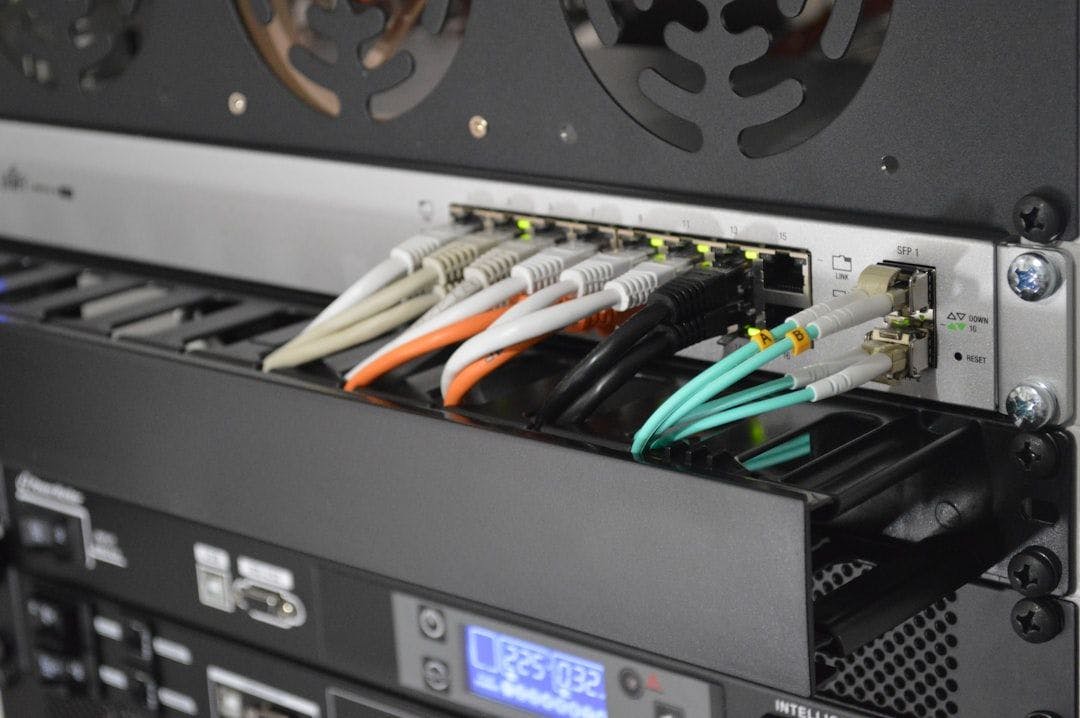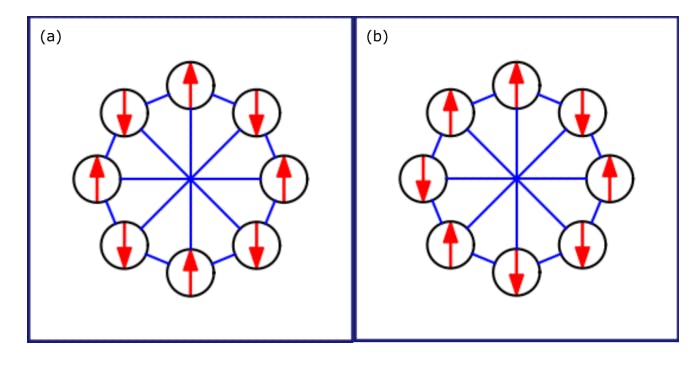Disclaimer: Readers should not infer that Google is using or planning to use any of these technologies in its products or services.
Introduction
The ever-increasing demand for data-driven applications and services has placed pressure on networking infrastructures. As the primary source for data flow, network routers and switches play an important role in ensuring seamless communication, data management, and network reliability. Traditionally, these devices relied on static configurations and manual management, which often led to challenges in scalability, efficiency, and security. However, Artificial Intelligence (AI) is changing the domain of networking by introducing intelligent, autonomous, and adaptive capabilities to routers and switches.
Networking technologies integrate machine learning and deep learning models into network infrastructure, enabling dynamic traffic management, real-time threat detection, and predictive maintenance. These innovations not only increase the performance and security of networks but also reduce operational complexity and costs. AI solutions, such as intelligent routing algorithms, anomaly detection systems, and self-healing networks, provide new ways for optimizing Quality of Service (QoS) and maintaining high network reliability.
This article examines the impact of AI on the design, operation, and management of networking routers and switches. Further it deep dive into key enhancements, such as AI optimized hardware, software-defined networking (SDN) integration, and the implementation of autonomous network management techniques.
Background
In the past, routers and switches operated on static configurations and predefined protocols. They rely on deterministic routing algorithms such as Open Shortest Path First (OSPF) and Border Gateway Protocol (BGP) to direct traffic. Although these protocols provided structured data transmission, they lacked adaptability to real-time network conditions. This leads to potential impact due to rigid, pre-configured routing mechanisms. Network administrators had to manually adjust Quality of Service (QoS) policies, VLAN segmentation, and traffic prioritization, resulting in high operational costs and potential downtime. Further, legacy devices lacked predictive analytics. This makes proactive detection of network failures challenging. The absence of real-time anomaly detection leads to security threats, such as Distributed Denial of Service (DDoS) attacks. These attacks were identified only after significant damage happened. As networks grew in scale and complexity, traditional approaches struggled to meet the demands of cloud computing, IoT devices, and high-speed data transfers.
AI Advancement in Routers and Switches
Emergence of AI in Networking
The integration of AI into networking is changing network management from reactive to proactive and adaptive. AI-driven routers and switches deploys deep learning models to analyze traffic in real-time, predict congestion, and optimize data flow dynamically. These intelligent routing protocols adjust traffic paths based on network conditions, improving latency and bandwidth efficiency.
AI powered security systems use behavioral analytics and anomaly detection to identify and remove threats before they impact network integrity. intrusion prevention systems (IPS) monitor packet flows with higher accuracy than traditional methods. Further, AI automates firmware updates and security patching. This will strengthen resilience against cyber threats. In Software-Defined Networking (SDN), AI integrated network slicing dynamically allocates virtual lanes. This will help in improving performance of latency sensitive services like video streaming, VoIP, and industrial IoT.
With advancement of AI technology, self-healing networks will enable predictive fault detection and automated resolution. This will further improve network resilience, and cost-efficiency in enterprise and data center environments.
Hardware Advancements
AI-Optimized Chipsets
To handle deep learning inference directly on the device, modern routers and switches incorporate AI-optimized chipsets with dedicated AI cores. These chipsets help with real-time pattern recognition in network traffic, predictive failure analysis, and anomaly detection.
Further, AI-enhanced telemetry collection gathers granular network statistics that enable proactive decision-making. These chipsets support programmable networking through P4 (Programming Protocol-Independent Packet Processors) and SDN. This allows network engineers to deploy AI-based policies directly onto hardware for customized optimizations.
Integration of FPGAs and Smart NICs
Field-Programmable Gate Arrays (FPGAs) and Smart Network Interface Cards (NICs) are increasingly used to increase AI workloads in networking. FPGAs offer real-time reconfiguration for AI-driven tasks such as packet classification, deep packet inspection (DPI), and latency-sensitive applications.
Smart NICs offload AI-related computations from the CPU. This reduces processing overhead and improves overall network efficiency. Solutions like NVIDIA’s BlueField DPUs and Intel’s SmartNICs demonstrate how AI-driven network functions enhance quality-of-service (QoS) management, automated threat detection, and fine-grained traffic shaping, making sure optimal network performance with minimal latency.
Software Innovations
Machine Learning Algorithms for Traffic Optimization
AI enabled Machine learning algorithms analyze traffic patterns and optimize data flow. Further Reinforcement learning (RL) predicts network congestion and dynamically adjusts routing paths based on the demand. Supervised and unsupervised learning methods helps with traffic patterns, detecting issues, and prioritizing latency sensitive packets such as video conferencing and VoIP.
AI-driven traffic engineering improves network throughput and minimizes packet loss through adaptive packet scheduling and intelligent flow control mechanisms that is commonly implemented in SD-WAN and network orchestration tools.
AI-Driven Network Automation
AI-based automation reduces the need for manual intervention in network management. Natural Language Processing (NLP) aids in intelligent command interpretation, supporting automated configuration, performance monitoring, and security policy enforcement. While NLP-based automation is advancing, widespread adoption remains in progress.
Intent-Based Networking (IBN) translates high-level business policies into automated network adjustments, ensuring self-healing network behavior. However, human oversight is still necessary to refine policies and maintain alignment with organizational goals.
Furthermore, AI-driven anomaly detection continuously scans for unusual network behaviors, helping with proactive remediation before disruptions occur. By integrating deep learning and predictive analytics, AI-driven network automation enhances operational efficiency, reduces downtime, and strengthens overall network resilience.
Impact on Network Performance
Enhanced Data Throughput
AI integrated routers and switches help improve data packet management and increase network throughput.Further by analyzing real-time traffic, AI powered deep packet inspection (DPI) and intelligent flow classification improve packet forwarding decisions. AI-enabled network processors dynamically change data paths based on congestion, application priority, and Quality of Service (QoS) requirements. This makes sure efficient resources are utilized.
To anticipate congestion and enable preemptive load balancing, AI-powered traffic prediction models leverage historical and real-time telemetry . Further Reinforcement learning algorithms adapt to evolving traffic conditions, minimizing packet loss and latency. Further, AI-driven real-time packet prioritization makes sure critical applications like VoIP, video conferencing, and cloud services receive dedicated bandwidth.
AI-powered telemetry analysis enhances network health monitoring, detecting anomalies and predicting hardware failures. Intent-based networking (IBN) helps routers and switches to adjust network policies, reallocate bandwidth, and optimize data flows. This creates a resilient, self-healing infrastructure that is capable of sustaining high performance data transmission under variable workloads.
Reduced Latency
AI-powered predictive analytics foresee potential issues and optimize packet forwarding. AI-driven congestion control mechanisms, including adaptive packet pacing and latency-aware routing.This enhance responsiveness for time-sensitive applications like autonomous vehicles and telemedicine.
Edge AI processes data closer to the source, eliminating delays introduced by centralized cloud processing. AI-driven microprocessors in edge networking devices execute real-time packet analysis and intelligent routing which helps in reducing transmission delays. AI-based multipath routing dynamically distributes traffic based on latency, jitter, and real-time conditions, making sure ultra-fast, reliable digital communications.
QoS optimization dynamically prioritizes latency-sensitive traffic, minimizing performance degradation under high network loads. AI models that are trained on the historical and real-time traffic data will predict congestion and will dynamically change transmission rates. This will prevent packet loss and will further reduce retransmission overhead.
Intelligent Load Balancing
AI-integrated load balancing dynamically distributes traffic based on network conditions. This will improve routing efficiency and reduce packet loss. Path selection algorithms evaluate bandwidth availability, link stability, and historical performance making sure seamless traffic distribution.
Software-defined networking (SDN) integrated with AI-driven orchestration enables real-time flow reallocation, mitigating congestion and maximizing throughput. AI-powered predictive analytics anticipate network overloads and initiate preemptive load redistribution.
In multi-cloud and hybrid-cloud environments, AI-driven load balancing makes sure seamless application delivery by dynamically adjusting server requests. AI-powered auto-scaling optimizes resource allocation during peak usage while deallocating unused resources which helps with improving cost efficiency. Further, AI-enhanced anomaly detection mitigates irregular traffic spikes, making sure network stability and security.
Security Implications
Advanced Threat Detection
To detect security threats in real-time,AI-powered routers and switches analyze network traffic patterns. Deep learning models, such as transformer-based architectures and recurrent neural networks (RNNs) help improve anomaly detection. Further federated learning strengthens AI-driven threat intelligence by continuously refining detection models while preserving data privacy across distributed networks.
Self-learning AI algorithms accomodate to changing attack vectors that will strengthen defenses against zero-day attacks and advanced persistent threats (APTs). Further by adjusting detection parameters based on real-time threat intelligence,Reinforcement learning improves intrusion detection systems (IDS) . This further makes sure proactive and adaptive security in the network system.
AI-powered threat hunting automates the identification of malicious behavior by correlating network signals, reducing false positives, and accelerating incident response. AI-driven behavioral analytics allows real-time network traffic segmentation, isolating suspicious activity to prevent malware propagation and contain breaches.
To simulate cyber-attack scenarios, adversarial training techniques—including Generative Adversarial Networks (GANs)—enhance AI model robustness against sophisticated threats. AI-powered deception technologies, such as intelligent honeypots and moving target defense (MTD), mislead attackers while gathering forensic intelligence to strengthen security strategies.
Automated Response Mechanisms
By isolating affected network segments, updating firewall policies, and deploying real-time security patches,AI-integrated security systems can help reduce threats . To improve threat classification and incident response, Security Orchestration, Automation, and Response (SOAR) platforms integrate machine learning powered Security Information and Event Management (SIEM) systems.
Further to enhance decision-making, Reinforcement learning-based AI dynamically adjusts Intrusion Prevention System (IPS) rules based on live attack patterns, leveraging continuous threat intelligence. AI-driven analysis allows anomaly detection and automated remediation. This minimizes human intervention and reduces response times.
AI-integrated deception technologies, such as adaptive honeynets, simulate real network environments to attract attackers into controlled settings for forensic analysis. Further, AI-powered attack surface management continuously assesses vulnerabilities and recommends automated patching solutions that will strengthen network defenses with minimal downtime.
Enhanced Encryption and Data Protection
AI does not change encryption algorithms but improves cryptographic implementation through key management, risk analysis, and efficiency optimization.
- Key Management and Risk Analysis: AI suggests accurate key rotation schedules, automates certificate renewals, and detects anomalies in the cryptographic systems for proactive security.
- Optimization of Post-Quantum Cryptography (PQC): AI assists in selecting and improving PQC algorithms for efficiency without modifying fundamental cryptographic principles.
- Encryption Performance Enhancements: AI improves cryptographic computations, increases secure multi-party computation (SMPC), and identifies vulnerabilities in the cryptographic implementations.
- Homomorphic Encryption (HE) Efficiency: While AI helps with improving resource allocation in Homomorphic Encryption implementations, it does not eliminate the inherent computational overhead of HE.
- AI in Blockchain Security: AI has an important role in the fraud detection, transaction monitoring, and consensus optimization but AI does not replace cryptographic key management in the blockchain security.
Future Outlook
- As AI is continuously evolving, it is very important that future research should focus on improving AI algorithms for real-time decision-making, improving AI-powered network processors, and researching privacy-preserving AI techniques such as federated learning for decentralized network management. Although federated learning improves privacy and distributed intelligence, challenges such as synchronization, adversarial attacks, and computational efficiency must be addressed before large-scale deployment in networking.
- The integration of AI with quantum computing has benefits for ultra-secure communication protocols. AI can assist in improving quantum key distribution (QKD) and managing quantum error correction that will enhance security in future networks. Having said that, quantum computing’s real-world applications in networking are still in their early stages, requiring further advancements in hardware stability and AI-driven quantum network optimization.
- AI-powered intent-based networking (IBN) is well positioned to become a transformative standard that will allow networks to autonomously interpret high-level business objectives and translate them into real-time configurations. Although IBN enhances automation and network intelligence, human oversight remains essential to prevent misconfigurations and security vulnerabilities.
- Evolution in AI-driven cybersecurity frameworks will be an important in strengthening network infrastructures against evolving cyber threats. AI allows real-time anomaly detection, automated threat mitigation, and adaptive security measures. Having said that, AI also introduces new attack vectors, such as adversarial AI attacks and model poisoning, which require robust strategy, including AI explainability and adversarial defense techniques.
- The integration of AI, edge computing, and 6G networks will enhance networking capabilities. This will allow low latency, intelligent automation, and dynamic resource allocation. AI-driven network slicing will have an important role in improving bandwidth, computing power, and service quality for different applications. Although AI improves network efficiency, its deployment in 6G networks will require security frameworks. This will allow us to resolve risks associated with AI-powered decision-making.
- Apart from technical advancements, ethical considerations such as algorithmic transparency, bias mitigation, and regulatory compliance must be prioritized. AI models used in networking should follow the global standards such as GDPR, the EU AI Act, and NIST AI Risk Management Frameworks. To make sure accountability and reduce unintended biases in AI-driven networking decisions,Explainable AI (XAI) and fairness-aware algorithms will be quite essential.
Conclusion
The integration of AI into network routers and switches is a huge advancement in networking technology. AI-driven innovations in hardware and software have enhanced performance, improved security, and allowed autonomous network management. AI-based self-optimizing networks can dynamically adapt to fluctuating traffic patterns, ensuring optimal throughput and reduced latency in real-time. Deep learning models improve decision-making processes. This allows networks to anticipate and resolve potential failures even before they occur. The incorporation of AI-powered anomaly detection and predictive analytics further strengthens the reliability of the network infrastructures. Having said that, challenges such as scalability, ethical considerations, and algorithmic transparency must be addressed to fully realize AI’s benefits in networking.









